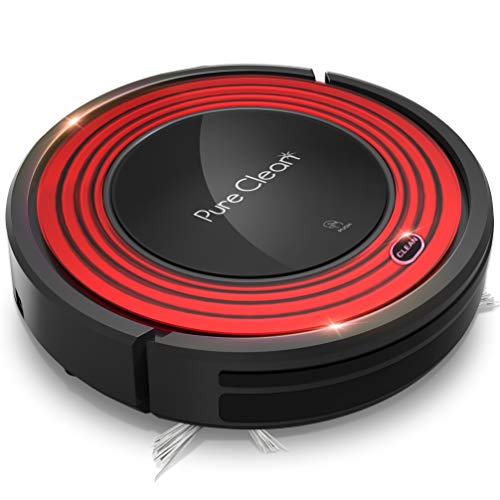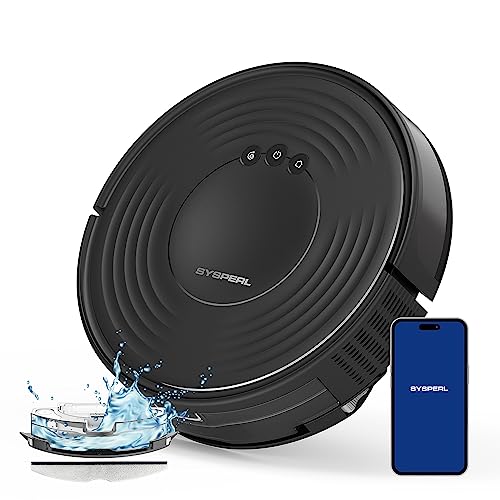 Robot Vacuum and Mop – Hands-Free Cleaning Made Easy
Robot Vacuum and Mop – Hands-Free Cleaning Made Easy
Take a look at this 2-in-1 cleaner if you’re looking for a cleaner that does it all. It mops hard floors and vacuums low and medium-pile carpets, and its app lets you design no-mop zones and adjust cleaning schedules and modes.
Look for models that have sensors that detect the type of floor they are placed on, empty dirt and water from their tanks, and stay clear of obstacles like phone chargers, pet hair, and socks. Also, discover how easy it is to install.
Self-Emptying
People are always looking for ways to decreasing their workloads as the world gets more hectic and chaotic. Robot vacuums and mops are among the best tools on the market to help with that. They can remove dirt, crumbs and pet hair while simultaneously cleaning floors. You can make use of your smartphone or voice assistants to control these machines using routines that are pre-programmed and have specific room designations.
Self-emptying models are a fantastic time-saver for both user and the machine. You don’t have to empty the dustbin every time you clean. This can save you time and let your robot clean the entire house more often.
If you’re thinking of the possibility of a robot that self-empties it, make sure to verify the size of the bin as it is likely to fill up if frequently used. You should also ensure that the system doesn’t overfill, causing obstructions that prevent the robot from being able to empty it completely.
The self-emptying feature involves removing the dustbin from the machine, and placing it into a larger storage container. Think of it as a bag for a vacuum cleaner. It is empty every two or three cycles. It’s a premium feature that makes these robots well worth the extra cost over standard models.
For the mopping function Some models wash and dry their own dirty pads after each use. Some models come with docks that does the job and you just have to empty it twice or every year.
Take a look at this Roborock robot that is highly rated for its capability to perform both tasks. The RockDock S7 MaxV Ultra is an upright vacuum and mop that is equipped with docks that take care of all maintenance. You don’t need to empty the tanks manually and you can program the unit or even start it with on-device controls and voice assistants like Alexa and Google Assistant. It is equipped with boundaries that prevent it from wandering into other rooms of your home when you don’t want it to.
Object Avoidance
The Best robot sweeper and mop robot vacuums have object avoidance. This makes it easier for the device to navigate around furniture legs and other toys. This feature is crucial for households with pets or children, since the robot can be damaged or jammed if it bumps into them.
The technology is typically based around a single sensor or a pair of sensors that are located close to the bumpers that absorb shocks of the vacuum cleaner. When these sensors detect a pathblock the robot will reorient and turn until it locates an open path. Certain models utilize lidar technology that uses lasers to measure the distance between the robots and other objects. This allows the robot to create a real-time map of its surroundings and allows it to move through your living space with more effectiveness.
Other robovacs, that don’t use lidar technology, are designed to recognize obstacles with cameras that utilize a binocular or monocular sight. These systems are most efficient in bright lighting, but they do not perform as well in low light or with objects that are the same color as the surrounding environment. For instance, a robot with monocular vision will have trouble recognizing cables or shoes.
Certain advanced robot vacuums can perform more than just avoid obstacles, which is why they’re referred to as smart vacuums. They can create a virtual plan for your home and send them to specific rooms or areas by using an app. They will even keep track of the areas they’ve previously cleaned. This can cut down on the time needed to clean and ensure that your home is properly cleaned.
The most advanced robotic vacuums and mops can switch between different types of flooring. Some can automatically detect what type of flooring is in the room and adjust their suction and brush features to match. Others can even move from hard floors to carpet without losing suction power.
Regardless of the flooring type regardless of the flooring type, all smart vacuums and mops need to be equipped with some sort of obstacle avoidance. These mechanisms ensure that the appliances don’t ensnare themselves in the wires which can cause them to lose suction. Certain models have a list of items they know about like socks, shoes, and pet waste. The best cheap robot vacuum and mop models can identify these items and calculate their size and distance, and evade them without running into them.
Floor Mapping
The majority of robot vacuums have sensors that aid in detecting objects. If something, like furniture legs or a toy thrown in a random way, gets in the way of the vacuum cleaner’s path, sensors will inform it to move away and to clean the floor. However the sensors aren’t foolproof. The Roomba 900 Series, for example, was able to avoid our headphones and shoeslaces however, it did accidentally take up cables. We recommend moving objects away from the robot’s path before letting it run through your home.
A lot of the mopping and vacuum robots we’ve tested in The Spruce come with an application that allows you to save maps, set schedules, select cleaning options and monitor your robot’s progress. The best apps offer features that can make your robot more efficient. They are intuitive and easy to use.
App integration lets you keep track of the water tank and dirty pads on your robot. Look for models that allow you to check the level of water in the tank, the amount of wetness on the pad and when the pad’s cloth should be changed. You can create a routine that automatically changes the pad after it is wet to prevent mildewy odors from building up.
The mapping feature is important for robot vacuums that operate on multiple floors. It allows the robots to create a map of your house that they can use to navigate and clean various areas. Some robots combine sensors and artificial intelligence to create maps. For example, iRobot’s Vacuuming Mapping makes use of multiple sensors to scan an area that includes walls and corners, to determine how far the robot can travel before hitting furniture or bumping into obstacles.
Other robots, such as the Ecovacs Deebot X1 -OMNI or the Roborock S7 MaxV Ultra use optical sensors to determine the wall’s position. They can then use an algorithm for mapping or follow the edges of furniture to figure out the most efficient route for each room.
Mopping Settings
Robot vacuums work automatically, with you doing nothing more than hitting an icon on a remote, or within an app to have them clean a room. You can also use voice commands to set schedules which is a great feature for busy families who require their robot vacuum to do its chores at the same time every day.
Most robot mops use microfibre pads that are soaked with water tanks within their base. Many can be used multiple times before having to clean or replace the pad. Find models that adjust the amount of water dispersed to suit different flooring types. It is also important to consider the size of your tank, its ability to switch between wet mopping and dry mopping, and the length of time a mop that is robotic can last on a single charge.
The best robot mop mops are able to effectively and quickly clean floors, even under tables and around obstacles. Although they are not perfect, they do struggle to climb stairs or navigating ledges between rooms. They can leave streaks of timber or tiles especially in bright sunlight.
A cheap robot vacuum vacuum or mop of good quality should also have carpet sensors. This is crucial in homes with a mix of floor types and the robot will not be sucked into or run over rugs. It should be able to recognize other objects which may hinder cleaning like cords and tassels. This will enable you to designate “no-go zones” that prevent the robot entering these areas.
 The majority of robots that we test in our CHOICE lab come with smart app integration. This lets you save maps of your house, set up cleaning schedules and select cleaning modes. You can also set up virtual barriers that block your robot from certain areas and receive (sometimes humorous) error alerts when the device has a problem. Certain applications are more user-friendly than others, and a few have a webcam that allows live monitoring of your robot.
The majority of robots that we test in our CHOICE lab come with smart app integration. This lets you save maps of your house, set up cleaning schedules and select cleaning modes. You can also set up virtual barriers that block your robot from certain areas and receive (sometimes humorous) error alerts when the device has a problem. Certain applications are more user-friendly than others, and a few have a webcam that allows live monitoring of your robot.
